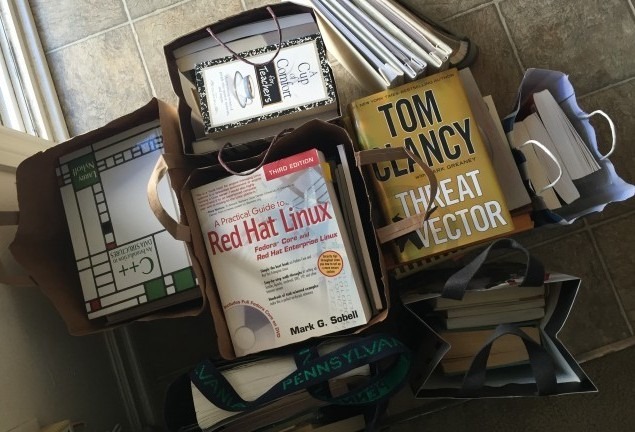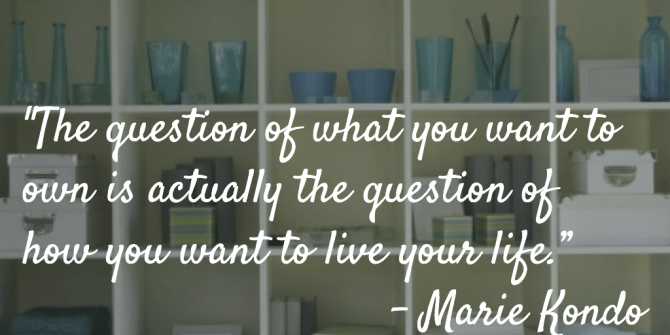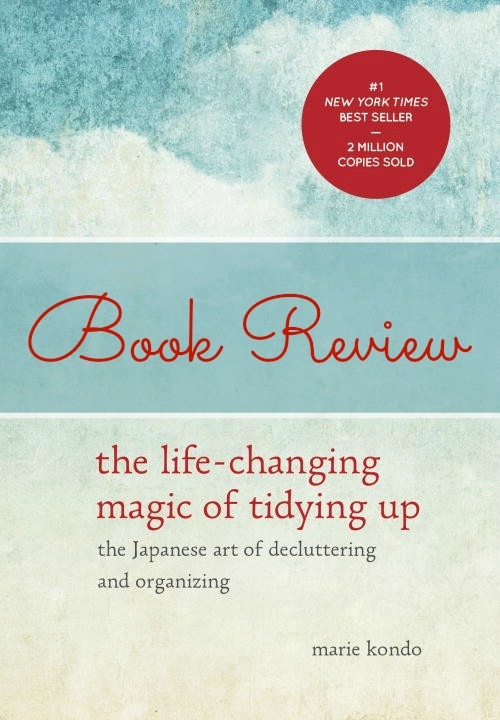While most little girls spend their time playing with dolls or making up dance routines, Marie Kondo’s favorite childhood pastimes included organizing bookshelves and pouring through home and lifestyle magazines. Kondo and I would have made great girlhood friends, as I too caught the organizing bug at an early age. To this day, I have a passion for all things-organized. However, I recognize that few people share my fascination with the often tedious task of “tidying up.” So when Kondo’s guide to decluttering shot to the top of numerous bestseller lists, I knew I had to read it for myself to see what this “magical method” was all about!
Kondo’s method for organizing one’s home is based on the premise that a home cannot become truly organized until the objects within that home have been pared down to the barest of necessities. Whereas most professional organizers are hoarders (at least, according to Kondo), she takes an opposite approach, beginning her instruction by making a strong case for minimalism. Kondo then walks her readers through the painful-but-essential process of discarding all possessions that do not “spark joy.” I can appreciate Kondo’s rigorous criterion of keeping only those things which “speak to your heart,” and have begun implementing this paradigm when seeking to decide what things deserve a place in my own home. However, I feel that this principle is too impractical to be taken completely literally: my tax documents might not necessarily bring me joy, but I am not about to discard them (nor can I afford to replace every dish, undergarment, or towel that I do not absolutely love).
One aspect of Kondo’s decluttering method that I am on board with is her admonishment to make sweeping changes all at once, rather than whittling away at the elimination process a day at a time. This strategy might be more painful, but it also holds the greatest potential to stave off a hoarding relapse, not to mention the snowballing effect that a massive overhaul can have on making a change. Kondo recommends tackling the paring down process by type of item, rather than by location, and this too makes a lot of sense.

Once one’s belongings have been ruthlessly scrutinized, and all superfluous items are out of the way, the remaining possessions are ready to be given the perfect home. Kondo prescribes very specific suggestions for organizing one’s items, from the proper method for folding socks to the best place to store a handbag. She also offers instructions for how to interact with and care for these possessions. I have no doubt that Kondo’s suggestions work well, but I feel that organization is a highly personal affair and that no one method will work best for everyone. I also found Kondo’s anthropomorphization of items to be a bit extreme: I have no intention to talk to my intimate belongings throughout the day, as Kondo herself does, and do not believe that doing so is necessary for preserving their functionality. That said, I am intrigued by her suggestion that every one of our items holds answers to how we want to live our lives, and I have already been experimenting with her strange but insightful strategy of listening to the stories my belongings have to tell.
According to Kondo, “a dramatic reorganization of the home causes correspondingly dramatic changes in lifestyle and perspective. It is life transforming.” And perhaps this is why her method has garnered so much enthusiasm: her readers are seeking to organize more than just their homes, they are looking for a framework for updating their lives. Though her method is not perfect, I believe that if it is applied with diligence and commitment, it holds the power to jumpstart the very transformations that her audience is seeking. Even for those of us who are not fully on board with her suggestions, this organizational manifesto can still serve as a positive source of inspiration and methods to try. Ultimately, I will be applying Kondo’s own minimalistic approach to sorting through the material in her book: I am keeping what works for me, and disregarding the rest.
My Book Rating: 3.5 out of 5 stars.


[…] Taking Steps Toward Minimalism: When Luke and I got married, we received a hand-me-down dining table from his aunt. While it met our needs in the moment, the massive table (and its eight chairs) occupied too much space in our current home. When rearranging furniture to accommodate our Christmas tree, we decided to sell the table and downsize to something smaller. We settled on a bistro-style table that we found on Amazon. We plan to eventually get something a bit bigger—just not quite SO big as our last table—but right now it’s the perfect fit for our tiny kitchen and our little family. I’m appreciating the extra open space in our dining area, and I feel relieved to have let go of one more item that no longer sparked joy. […]
[…] New Purse: I recently KonMaried my massive purse collection, and though I kept a handful of beautiful, joy-inducing purses, none of […]